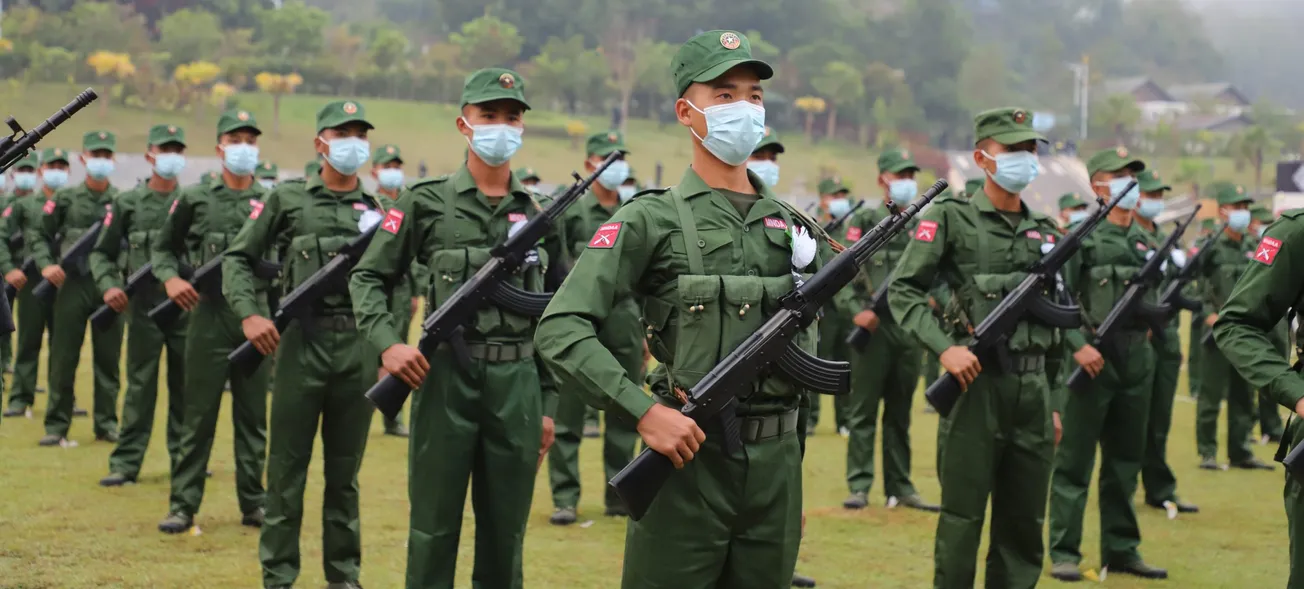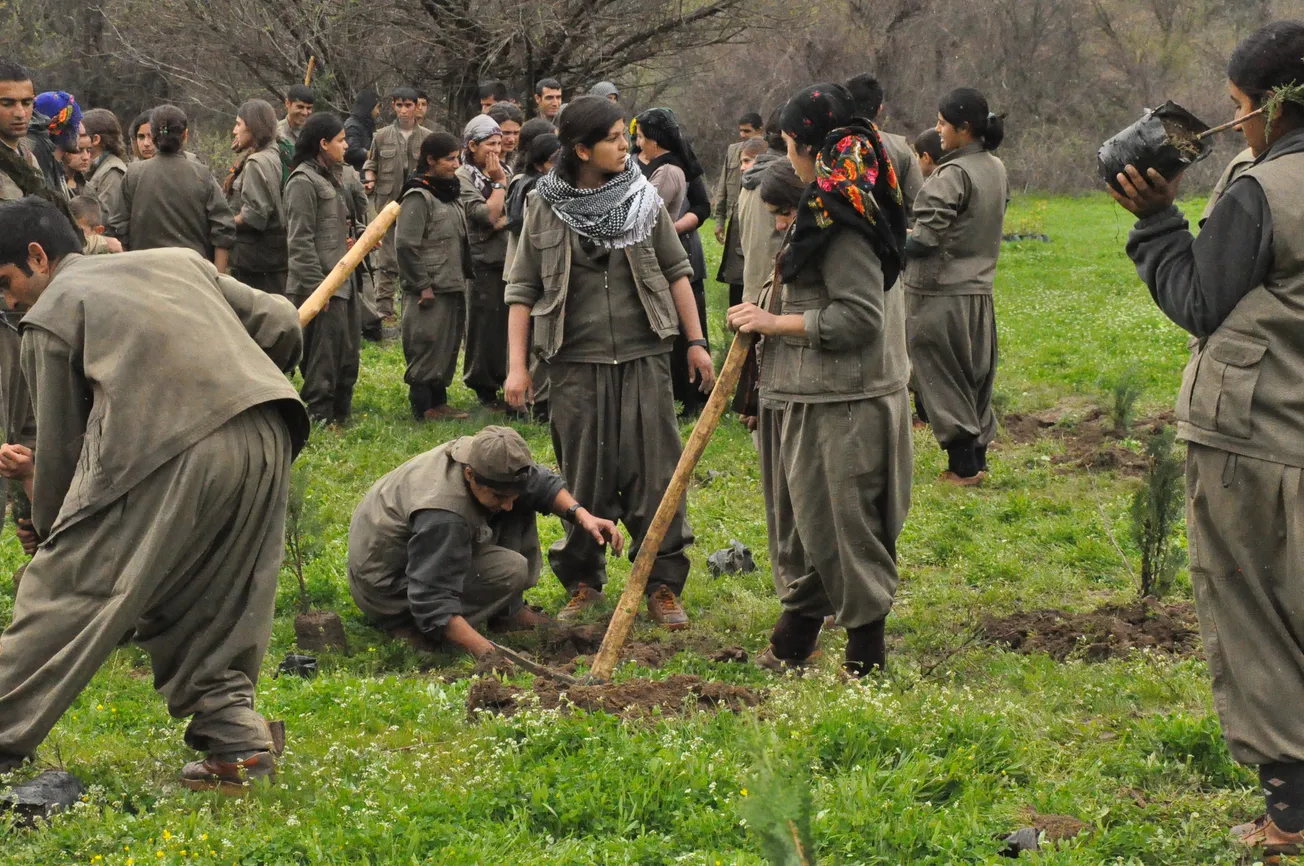Overview
The Myanmar National Democratic Alliance Army (MNDAA), also known as the Kokang Army, is an ethnic armed organization operating primarily in the Kokang region of northern Shan State, Myanmar. Formed in 1989, the MNDAA has been a significant player in Myanmar's complex landscape of ethnic conflicts and armed resistance movements. The group primarily represents the interests of the ethnic Kokang people, who are of Chinese descent.
As of early 2025, the MNDAA has emerged as one of the most formidable ethnic armed groups in Myanmar, playing a crucial role in the ongoing civil conflict following the 2021 military coup. The group is a key member of the Three Brotherhood Alliance, alongside the Ta'ang National Liberation Army (TNLA) and the Arakan Army (AA), which has achieved significant military successes against the Myanmar military junta in recent years.
The MNDAA's stated goals include achieving greater autonomy for the Kokang region and protecting the rights and interests of the Kokang people. However, its activities have also been associated with the lucrative border trade and drug trafficking, complicating its relationships with both the Myanmar government and neighboring China.
History
- Formation and Early Years (1989-2009): The MNDAA was founded on March 12, 1989, by Pheung Kya-shin (also known as Peng Jiasheng), a former local leader of the Communist Party of Burma (CPB). The group emerged following the collapse of the CPB, along with several other ethnic armed organizations in the region. Initially, the MNDAA entered into a ceasefire agreement with the Myanmar military government, becoming the first group in Shan State to do so. This allowed the Kokang region, designated as Shan State Special Region 1, to enjoy a degree of autonomy and economic development.
- Conflict and Exile (2009-2015): In 2009, tensions escalated between the MNDAA and the Myanmar military, leading to a significant conflict. The military launched an offensive against the MNDAA, forcing Peng Jiasheng and his followers to flee into exile in China. This period saw the Kokang region come under the control of a new administration aligned with the Myanmar government.
- Resurgence and Renewed Conflict (2015-2021): In 2015, the MNDAA attempted to retake control of the Kokang region, leading to intense fighting with the Myanmar military. While unsuccessful in regaining full control, this marked the group's return as a significant military force in the region.
- Post-Coup Era and Major Offensives (2021-Present): Following the military coup in Myanmar on February 1, 2021, the MNDAA, along with other ethnic armed groups, intensified its operations against the military junta. The most significant action came with Operation 1027, launched on October 27, 2023, in coordination with the Three Brotherhood Alliance. This offensive resulted in the capture of numerous towns and military installations in northern Shan State, including the strategically important city of Lashio. By early 2025, the MNDAA had gained control over 15 out of 17 townships in its operational area, marking a dramatic shift in the balance of power in the region.
Key Characteristics
- Ethnic-Based Organization: The MNDAA primarily represents the Kokang people, an ethnic Chinese group in Myanmar.
- Cross-Border Connections: The group maintains strong ties with China, both culturally and in terms of economic and strategic support.
- Alliance Building: The MNDAA has demonstrated a capacity to form and maintain alliances with other ethnic armed organizations, most notably through the Three Brotherhood Alliance.
- Adaptability: The group has shown remarkable resilience and ability to adapt its strategies in response to changing political and military circumstances.
- Economic Interests: The MNDAA has been associated with the lucrative border trade and drug trafficking, which has been a source of both funding and controversy.
- Governance Aspirations: In areas under its control, the MNDAA has established parallel governance structures, including administrative and judicial systems.
Key People/Actors
- Peng Jiasheng (Pheung Kya-shin): The founder of the MNDAA who led the group until his death in 2022.
- Peng Daxun (U Peng Deren): Son of Peng Jiasheng and current leader of the MNDAA. He has played a crucial role in the group's recent military successes.
Key Capabilities and Tactics
- Guerrilla Warfare: The MNDAA excels in hit-and-run tactics and ambushes, leveraging its knowledge of the difficult terrain in northern Shan State.
- Conventional Military Operations: In recent years, the MNDAA has demonstrated increased capacity for more conventional military operations, including the capture of major towns and military bases.
- Alliance Warfare: As part of the Three Brotherhood Alliance, the MNDAA has coordinated its operations with other ethnic armed groups, enhancing its effectiveness against the Myanmar military.
- Use of Drones: The MNDAA has made extensive use of drone technology for both surveillance and offensive operations, as evidenced in the capture of Lashio in 2024.
- Cross-border Operations: The group's proximity to the Chinese border allows for strategic maneuvering and potential access to external support.
- Media and Propaganda: The MNDAA employs sophisticated media strategies to promote its cause and maintain support among the Kokang population.
- Resource Control: The group derives significant funding from control over natural resources and border trade in its territory.
Outlook
As of early 2025, the MNDAA's position in Myanmar's complex conflict landscape appears stronger than ever:
- Territorial Control: With control over 15 out of 17 townships in its operational area, including key military installations, the MNDAA has established itself as the dominant force in the Kokang region.
- Military Capabilities: The capture of significant military assets and territory during Operation 1027 demonstrates the MNDAA's growing military prowess and poses a significant challenge to the junta's control.
- Regional Implications: The MNDAA's control over strategic areas in northern Shan State could have far-reaching implications for major infrastructure projects and regional stability, particularly concerning China's interests.
- Alliance Dynamics: The success of the Three Brotherhood Alliance has strengthened the MNDAA's position, but maintaining unity among diverse armed groups may pose challenges in the future.
- International Attention: The MNDAA's military successes have drawn increased international attention to the situation in Shan State, potentially leading to greater diplomatic engagement.
- Governance Challenges: As the MNDAA consolidates control over new territories, its ability to govern effectively and provide services will be crucial for maintaining popular support.
- China's Influence: Recent reports of the detention of MNDAA leader Peng Daxun in China highlight the complex relationship between the group and Beijing, which could significantly impact its future operations and strategic decisions.
- Peace Process Uncertainties: While the MNDAA has made significant military gains, the path to a lasting political solution remains uncertain. Its demands for autonomy or federalism will likely be central to any future negotiations.
The future trajectory of the MNDAA and its conflict with the Myanmar military will likely depend on several factors, including its ability to maintain military momentum, govern effectively in controlled areas, and navigate complex regional and international dynamics. As the situation in Myanmar continues to evolve, the MNDAA's actions and strategic decisions will play a crucial role in shaping the country's future political landscape and the prospects for peace and federalism in the region.










